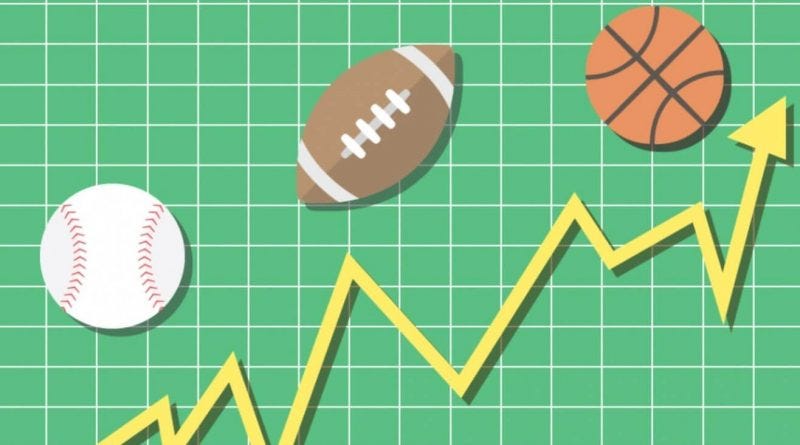Team performance and form are important when it comes to making predictions about sports’ results. This article will examine the importance of each and how it affects the predictions. Current Form and Momentum
Performance trends: Teams that perform very well are likely to continue to be successful due to their confidence as well as their high morale and the ability to execute strategies.
Momentum: Success leads to more success. Teams that are enjoying a winning streak often carry their momentum into subsequent games, which impacts their play positively.
2. Injuries and the possibility of Availability
Player fitness: The condition of the key players can have a a dramatic impact on a team’s performances. A team that is in good condition with healthy players will be more successful.
It is vital to have a strong squad. Teams with more players will be able to keep their performance even when they suffer injuries. Teams that have fewer substitutes of high-quality may have a difficult time.
3. Tactical Constance and Adaptation
Strategic Stability: Teams who possess a solid tactical strategy are more likely to succeed. Teams who experiment with new strategies could face unsteady results.
Flexibility: Teams that are able to modify their strategies to take on the strengths of their opponents are more effective.
4. Psychological Factors
Confidence: Teams and players who are confident tend to perform better under pressure.
Stress Management: Teams that are used to playing high stakes games are more effective under pressure, based on their experience.
5. Home and Away form
Home Advantage: Teams typically do better at home due to familiar surroundings, support from the crowd and less fatigue from travel.
Travel Impact: Away performances can vary significantly due to factors such as travel distance the climate, distance, as well as local weather conditions.
6. Historical Performance
Head-to-head records: The past results of two teams may be a clue to the future, especially if a team consistently outperforms the other team.
History of venues: Teams have certain venues in which they’ve historically performed better or less.
7. Analysis of Statistical Analysis
Performance metrics: Advanced metrics such as expected goals (xG) and stats on possession and defensive solidity provide deeper insight beyond losers and wins.
Trend Analysis: Statistics helps identify areas of performance that raw data might not show.
8. Motivation and stakes
Motivational Factors: Teams fighting for titles, fighting to avoid being relegated, or participating in knockout rounds often show higher performance levels due to an increased level of motivation.
Seasonal context: Teams could opt to rotate players in smaller games.
Predicting team performance by integrating the team’s formation
To predict the outcome of sports analysts typically employ models that incorporate these variables.
Quantitative Models: They use statistical data on recent form, performance in the past players’ statistics, as well as other factors that are quantifiable.
Qualitative Analysis: Experts consider tactical nuances, psychological factors, and team news, that may not be captured by data.
Also, you can read our conclusion.
While team performance, form and composition are all important factors, they should not be the only ones considered. Strategies for managing as well as other unpredictable factors such as weather or referees’ decisions should also be taken into consideration. Quantitative information combined with qualitative insights generally yields the most robust forecasts. See the most popular try this url for site examples.

What Are The Most Important Tactical And Strategic Considerations In Forecasting The Outcome Of Sports?
When attempting to predict sports outcomes, strategic and tactical aspects play a significant aspect. These considerations involve making game plans and planning to take advantage of the weaknesses of opponents and maximizing the strengths of the team. Here is a more in-depth explanation of the reasons these elements matter:
Exploiting Matchups: Effective tactics usually involve arranging favorable matchups. A football team could employ an winger who is fast to take on a slower full-back.
Adapting To Conditions: Strategies are adapted to the conditions, such as weather, surface of play and the venue. This allows teams to make the most of its strengths.
Flexibility and adaptability
In-game Adjustments: Teams who can adjust their strategies throughout games are typically more efficient. This can include making tactical changes as well as changing formations, or adjusting defensive and offensive strategies based on the flow of the game.
Team members who are able to counter the strategies of their adversaries are more likely to achieve success. Understanding and anticipating the strategy of the opponent can help reduce their strengths.
Defensive as well as offensive strategies
Defense organization: Solid defensive strategies, like deep defending or high pressing, can stop an opponent’s offensive. Teams with good defensive structures tend to concede fewer goals.
Even the best-organized defenses could be beaten with various attacking strategies such as quick counterattacks or possession-based plays.
The roles of teams and players:
Clarity in Roles: Each player should be aware of their role in the team. This clarity is essential in executing the overall strategy.
Key Players – Utilizing key players in roles which maximize their impact is vital. For instance the role of a playmaker or a the player who is targeted in an attack.
Analyses of Situation and Historical Analyses
Past Meetings: examining how teams have tactically approached the previous meetings can provide insight into game strategies and the outcomes.
Current form. The tactical considerations must be adjusted to match the current practices of the team as well as the players. The tactic that worked in the past may require adjustment if the form has changed.
Psychological Impact:
Preparation and Confidence: Well-prepared teams with clear strategies are more likely to perform with greater confidence. The psychological advantage is vital for close matches.
Engaging in a battle: Effective strategies can frustrate your opponent which can lead to mistakes and lower morale. This is a crucial aspect.
Sport-Specific Considerations:
Soccer: Formations (e.g. 4-3-3 vs. 3-5-2), pressing styles, and set-piece strategies are vital. The selection of tactics will influence the control of midfield, the exploitation of wide spaces, or the capability to break down defensive lines.
Basketball: The significance of tactics such as zone defense and. the man-to-man defense, speed, and offensive plays (e.g. the pick-and-roll play or isolation play) is crucial.
Cricket: Field placement and bowling instructions, as well as the sequences of batting can all influence the outcome of a game particularly when it comes to the various formats, like T20 vs. Test games.
Influence of the Coach and Manager
Tactical Knowledge: A coach’s knowledge of the game as well as the ability to design and implement effective tactics is usually a key determinant of a team’s success.
Team Buy-in: The degree that players comprehend the tactical plan and buy in to its execution. The cohesion of implementation of strategy is essential.
It is obvious that strategic and tactical aspects are vital for predicting sports outcomes. They affect every aspect of the game, from the individual’s performance to the team’s dynamics. A solid understanding of the tactic combined with an analysis of injuries forms and other variables can give a solid foundation for accurate predictions. Check out the top today’s tennis for website examples.

What Are The Psychological Aspects That Influence Sports Performance?
These are crucial because they influence players’ motivation and mindset. This is why these aspects are important:Confidence and Self-Belief:
Positive Mindset. Athletes and teams with high self-confidence and confidence in their abilities are likely to perform their highest when under pressure or in competition with stronger players.
Resilience: Teams that are resilient can bounce back after failures and remain focused. They will keep striving for success despite adverse circumstances.
Motivation and Determination
Intrinsic Motivation: Internal factors like personal goals, the desire to succeed, and pride in the sport can drive players to perform at their highest, regardless of external pressures or distractions.
External Motivation – External factors like team goals, fan support, or the need to debunk criticism, can also be a source of motivation and determination.
Mental Toughness
Ability to Handle Stress Ability to handle stress: Teams and players that have a high level of mental toughness can thrive under pressure. They’re able to keep their composure, and make quick decisions in situations with high stakes.
Focus and Concentration – Mental toughness aids athletes in staying focused and clear of distractions and keep their focus throughout the game.
Team Cohesion and Chemistry:
Positive Relationships – Strong bonds as well as positive relations among teammates can result in improved communication, trust, and collaboration.
Team members with a shared goal – Teams that have an unifying purpose and a common goal can more easily conquer challenges and succeed.
Handling Adversity:
Psychological Factors can Influence the way teams react to setbacks. The how teams and their players respond to setbacks (such as conceding a score or trailing the game) can be influenced. Groups that are resilient are more prepared to regroup and mount comebacks.
Mental Rebound. Resolving past mistakes and disappointments requires mental strength and the ability learn from your mistakes and change.
Visualization and Preparation
Mental Preparation – Visualization techniques and mental rehearsals are utilized to prepare athletes for competitions, boosting their performance and confidence the day of an event.
Mental Imagery. Visualizing the outcome of a task and thinking about it helps boost confidence and ease anxiety.
Opponent Perception:
Respect vs. Intimidation. How teams view their opponents can affect their mindset and game approach. Respect without intimidating can foster an enthused and competitive mindset.
Underestimation – Underestimating your opponent could cause you to be smug and unprepared, which increases the chance of an surprise.
Coaching and leadership influence:
Leadership Impact: Through their communications and the way they lead, coaches and captains of teams can significantly influence the mental state of a group, instilling motivation, confidence and resilience.
Psychological Support: Providing athletes with mental support and motivation can assist them to to cope under stress, overcome challenges and achieve their highest performance.
In the end, psychological variables are crucial in predicting sports outcomes because they affect the performance of teams and individuals in a significant way. Understanding the psychological dynamics of players can help in forecasting how teams and players will perform in various situations. When you combine psychological aspects together with external circumstances and factors like form, tactic, and tactic, it’s possible to make more accurate predictions. 